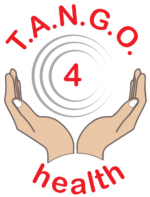Going on holiday with a diet... it can cause a lot of stress.
In this blog I am sharing 11 tips how you can enjoy a gluten-free holiday.
# Bring your own food
Always bring some of your own food with you on a trip. For example gluten-free and lactose-free crackers. These products have a long shelf life. Gluten-free muesli bars are also great.
In case you have booked a room where it is possible to cook your own meals, make sure to pack some gluten free pasta. In most countries, you can find potatoes and rice in the grocery stores.
And don't forget to divide your food over all the suitcases (including form your travel companions). If one suitcase disappears, you still have stock in one of the other suitcases.
# Letter from your doctor
Make sure (well in advance) that you have a letter from your doctor stating that you have an illness that requires you to follow a special diet and that you must bring your own food. In consultation with your airline, you can often take extra weight with you without paying extra.
Please note: Airlines are not obliged to provide leniency in this regard. But it is often possible.
# Consultation with the airline company
Check with your airline company to see if a meal is available for you. Gluten-free is often possible, but low FODMAP or vegan is often more difficult.
# Check your hotel
Make sure you stay at hotels where you can eat gluten-free. If you are going on a tour, please discuss this with the tour guide in advance.
# Translate
Google in advance what the name of your allergen is in the language of the country you are going to visit. Senza glutine, sans gluten, gluten free. Garlic or rennet are also words that you can look up in advance. Then you know what to ask for or what to look out for when reading labels. You can also take your entire diet list with you with a letter.
# Check supermarkets
Check in advance where supermarkets that sell gluten-free products are located. Schär or Schaer is a gluten-free product line that is sold in many countries. You can often find supermarkets nearby that sell products of these brands. See also tip 8.
# Install translation app
Make sure you have a translation app on your phone. I mostly use the app: sayhi.
With this app you can have a conversation in two languages and easily understand each other. It is easy and quick.
# Gluten-free apps
Find out in advance which useful gluten-free apps are available for that specific country.
These are my favourites:
- “find me gluten-free” is a global app for restaurants and shops
- “glutenfreeroads” is a handy app where you can find stores that sell schär. There is now also a Schär travel app, but I have not tried it myself.
- "gluten free on the move" is an app for gluten-free addresses in the UK
- “AIC mobile” is the app of the Italian Celiac Association. This is not free, but if you create an account you can try it for free for two weeks.
- “Mangier Senza Glutine” is also an app for Italy and it lists all the addresses for restaurants approved by the Italian Celiac Association.
- “Celicidad” is an app for Spain.
In Spain and Portugal you can often go a long way with just speaking English. In any case, the SayHi app is also very well known in Portugal.
# Make your own meals
Personally, I really like being able to make my own meals at my holiday location. In the supermarket I often only buy fresh products: such as fruit and vegetables. I bring my own spices. It is relatively easy to make tasty food with fresh products, such as rice with sauce or a tasty salad. You don't need gluten-containing products for that.
# Read labels
Reading product labels is already difficult enough when the label is in your own language. A foreign language makes it even more difficult.
Especially because gluten can have many different names (wheat, barley, starch, maltose…). Sometimes it works with the SayHi app (tip 7). Sometimes it works by looking up your allergen in advance (tip 5) how to write your allergen in that language. But there are also apps that are meant to read labels.
For example, there is the allergy and vegan scanner from Soosee. This app is not free and has both very good reviews and very bad reviews. There is also a gluten-free scanner: but it can only recognize gluten and does not have such good reviews.
Don't want to take any risk? Then read the labels yourself and make sure you know what your allergen is called in the language of the country.
# Buy organic
Buy organic products in countries such as America and Canada. American products often contain a lot of additives (e-numbers) such as glutamate to which sensitive intestines can react fiercly. As stated in tip 9, I buy a lot of fresh products myself. But in Canada it turns out my stomach also reacted to fresh vegetables. Simply because they use more/other pesticides in the production process than we are used to here in Europe.
If in doubt: buy fresh and organic.
And furthermore: don't forget to enjoy your holiday.
Don't stress. Yes, it can go wrong. Don't worry, it will pass again. Build in a rest day and wait till you feel better.


